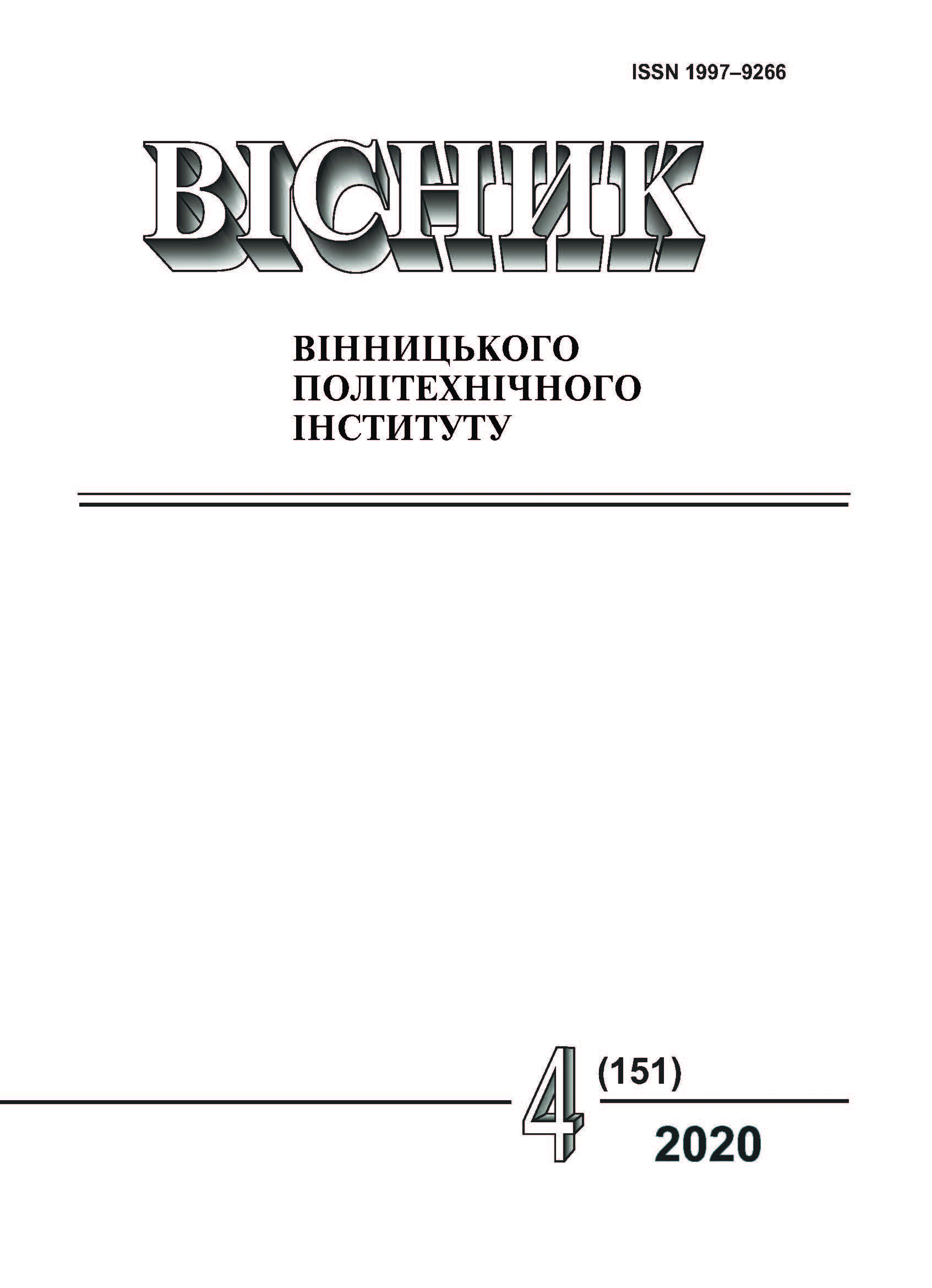Vector Method for Determination of Kinematic Parameters of Ideal Inertial Module in Stop Mode
DOI:
https://doi.org/10.31649/1997-9266-2020-151-4-105-112Keywords:
imbalance, inertial module, unified layout diagram, inertia transformer of moment, stop mode, trajectoryAbstract
The presence of a generalized scheme of the pulse mechanism created by A. I. Leonov does not have a universal mathematical description of parameters by continuous analytical functions, therefore each design is described, for the most part, by complex systems of differential equations, but the lack of clarity in presenting the results makes it difficult to intuitively understand dynamic processes. The objective of the research is the clarity in the study of the kinematic parameters of imbalance of the ideal inertia module during stop mode operation for predicting the dynamic indexes as continuous in time functions. The research method is based on a vector simulation of spherical motion parameters. To do this, a fixed Cartesian coordinate system is introduced so that the plane of the base circle of the initial cone of the jet conical wheel is aligned with the horizontal plane, and the axis of the satellite drive (geometric axis of the carrier) is aligned with the applicate axis. The central axis of the mechanism crossing the diameter of the jet wheel is aligned with the abscissa axis on the complementary branch of which at the initial moment there is the mass center of imbalance. In the stop mode the absolute motion of a point is determined by the result of its rotation around the satellite axis at the speed lying in the plane of the base of the initial cone of the satellite and around the drive axis at a speed which parallel to the plane of the initial cone of the jet wheel. Projections of the absolute velocity and the absolute acceleration of imbalance point on the coordinate axis, in turn, determine the projections of the components of the velocity vector and acceleration vector on the planes of the fixed Cartesian coordinate system, respectively. Determining the arms of these components in the planes of projections relative about the center of the axis makes it possible to further predict the dynamic parameters at certain points of the trajectory (at particular time or another). Analytical calculations of modular values of linear and angular velocities and accelerations, as well as drawing of the appropriate diagrams were performed using the operators of MathCAD software.
References
А. И. Леонов, Инерционные автоматические трансформаторы вращающего момента, Москва: Машиностроение, 1978, 224 с.
А. Т. Полецкий, и Г. Г. Васин, «К интегрированию уравнений инерционного трансформатора момента,» Сб. «Динамика машин», Москва: Машиностроение, с. 297-308, 1969
G. Berselli et al., “Kinematic design and bond graph modeling of an inertia-type infinitely variable transmission,” Proceedings of the ASME Design Engineering Technical Conference, 5, 2008. https://doi.org/10.1115/DETC2008-49875 .
F. G. Benitez et al., “Infinitely Variable Transmission of Racheting Drive Type Based on One-Way Clutches,” ASME. Journal of Mechanical Design, no. 126 (4), pp. 673-682, July 2004. https://doi.org/10.1115/1.1758258 .
S. Aliukov et al., “Analysis of Methods for Solution of Differential Equations of Motion of Inertial Continuously Variable Transmissions,” SAE Technical Paper, 2017. https://doi.org/10.4271/2017-01-1105 .
K. Liu et al., “Dynamic Analysis of an Overrunning Clutch for the Pulse-Continuously-VariableSpeed Transmission,” SAE Technical Paper, 1998. https://doi.org/10.4271/980827 .
E. Ince et al., “On the advantages of the new power-split infinitely variable transmission over conventional mechanical transmissions based on fuel consumption analysis,” Journal of Cleaner Production, 2020. https://doi.org/10.1016/j.jclepro.2019.118795 .
E. Tsuchiya et al., “Formulation of intervibrator motion and development of a controller for a pulse-drive transmission,” Mechanism and Machine Theory, vol. 150. https://doi.org/10.1016/j.mechmachtheory.2020.103880 .
J. Liang et al., “Simulation Study on Planetary Bevel Gear CVT System Based on Virtual Prototyping Technology,” Applied Mechanics and Materials, 215-216, 1003-1008. 10.4028/www.scientific.net/AMM.215-216.1003 .
А. М. Курко, і В. М. Каретін, «Інерційний диференціальний трансформатор моменту,» Патент на корисну модель України F16H 33/00, F16H 29/00. № 86532МПК (2014), 10.01.2014.
П. Стухляк, А. Курко, В. Каретін, і І. Добротвор, «Аналітичне дослідження кінематики дебалансу реактивно-інерційного блока інерційного трансформатора крутного моменту», Машинознавство, № 7, с. 41-44, 2011.
І. В. Кузьо та ін., Теоретична механіка, навч. посіб. Харків, Україна: Фоліо, 2017, 780 с.
А. М. Токар, Теоретична механіка. Кінематика: Методи і задачі, навч. посіб. Київ, Україна: Либідь, 2001, 416 с.
Я. Т. Кіницький, Теорія механізмів і машин, підруч. Київ, Україна: Наукова думка, 2002, 660 с.
Ю. К. Рудавський та ін., Лінійна алгебра та аналітична геометрія, навч. посіб. Львів, Украіна: Львівська політехніка, 1999, 262 с.
В. М. Каретін, А. М. Курко, і М. С. Михайлишин, «Кінетичні передумови трансформації в потужності інерційного диференціального трансформатору мометну,» зб. тез. доп. 14-й Міжнародний симпозіум українських інженерів-механіків у Львові. Львів, Україна: ТзОВ "КІНПАТРІ ЛТД", с. 108-109, 2019.
В. М. Каретін, «Графічний аналіз реактивно-інерційного блоку зубчастих коліс планетарного механізму. Актуальні задачі сучасних технологій,» зб. тез доп. Міжн. наук.-техн. конф. молодих учених та студентів. Тернопіль, Україна: ТНТУ, с. 47, 2010.
Downloads
-
PDF (Українська)
Downloads: 186
Published
How to Cite
Issue
Section
License
Authors who publish with this journal agree to the following terms:
- Authors retain copyright and grant the journal right of first publication.
- Authors are able to enter into separate, additional contractual arrangements for the non-exclusive distribution of the journal's published version of the work (e.g., post it to an institutional repository or publish it in a book), with an acknowledgment of its initial publication in this journal.
- Authors are permitted and encouraged to post their work online (e.g., in institutional repositories or on their website) prior to and during the submission process, as it can lead to productive exchanges, as well as earlier and greater citation of published work (See The Effect of Open Access).





